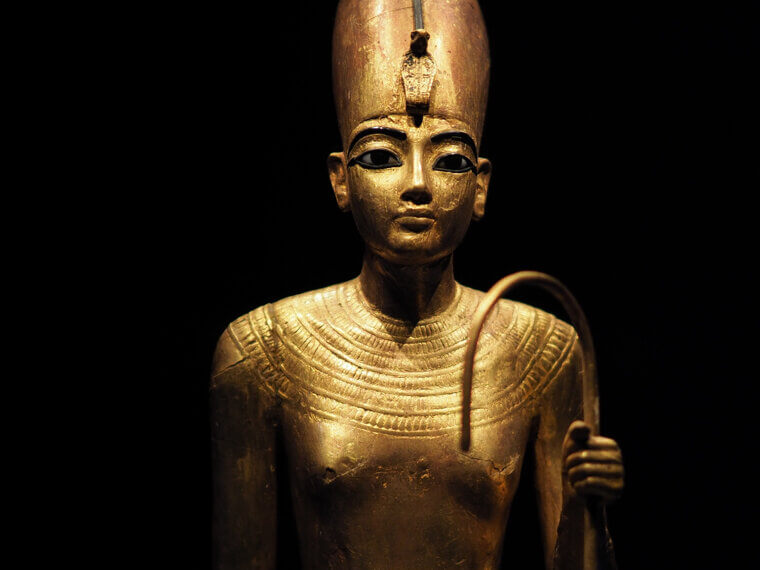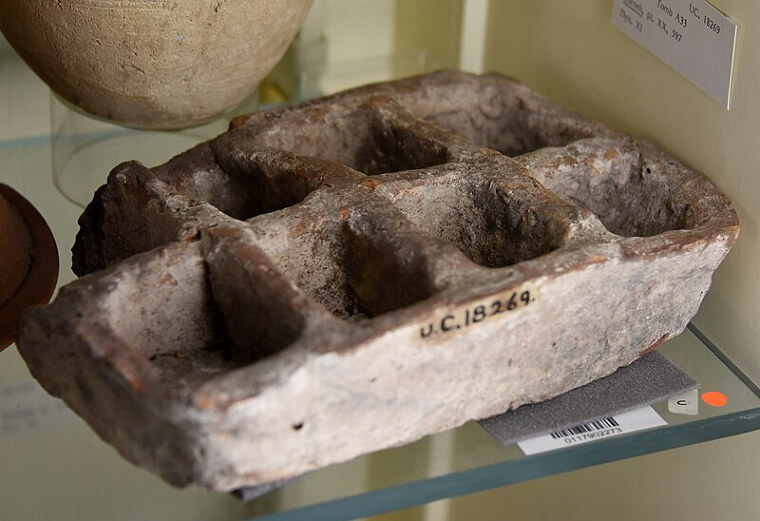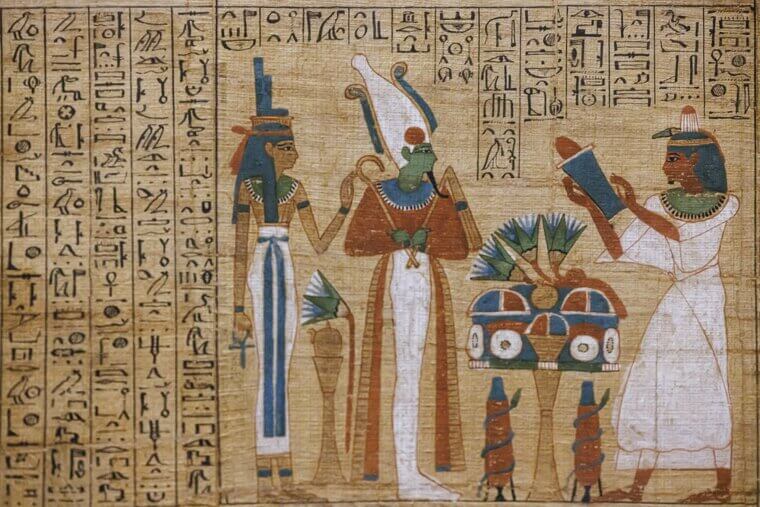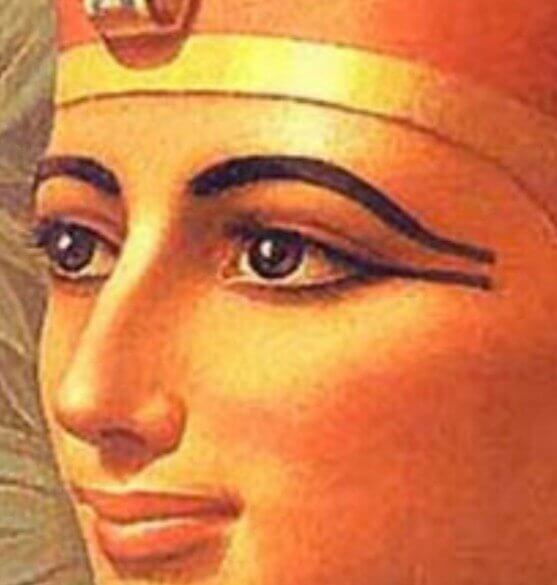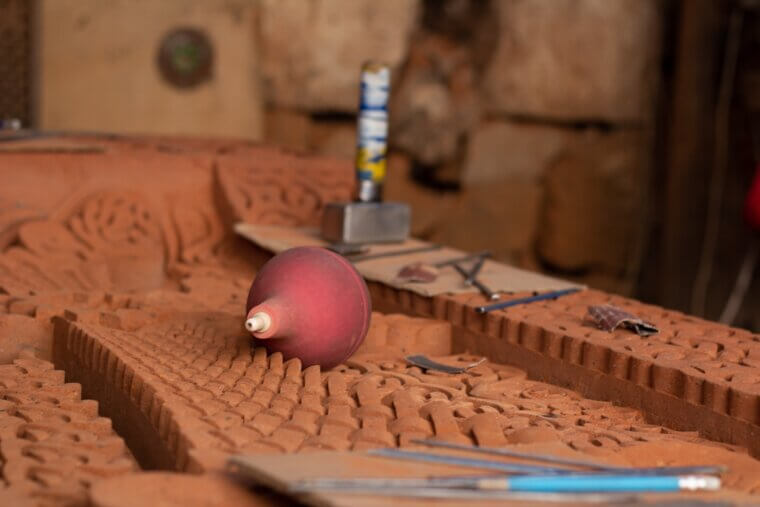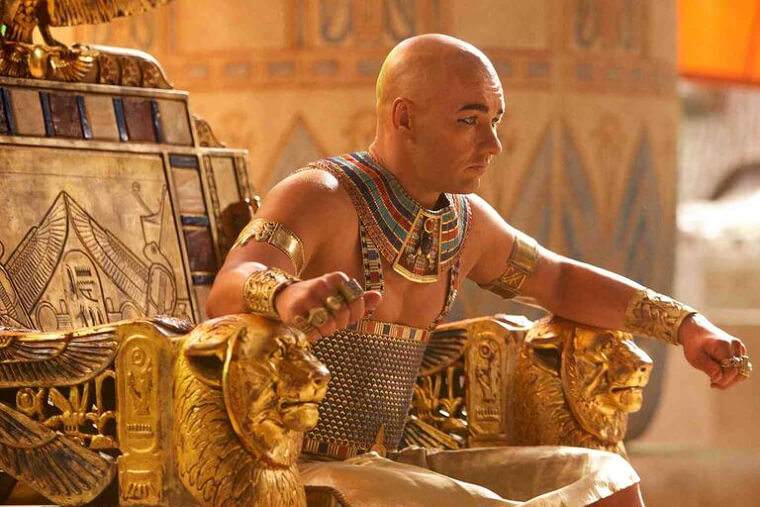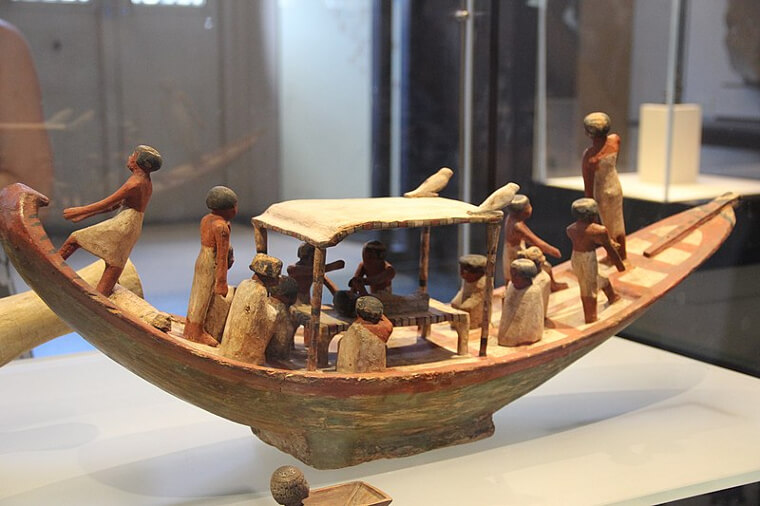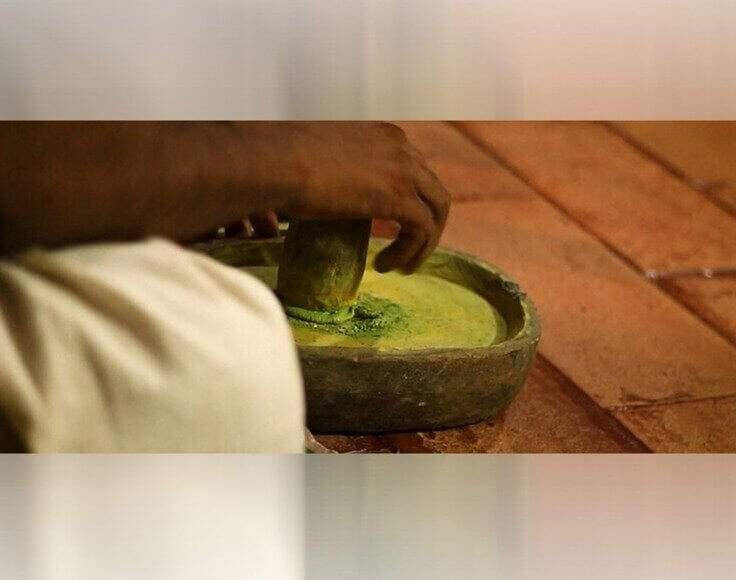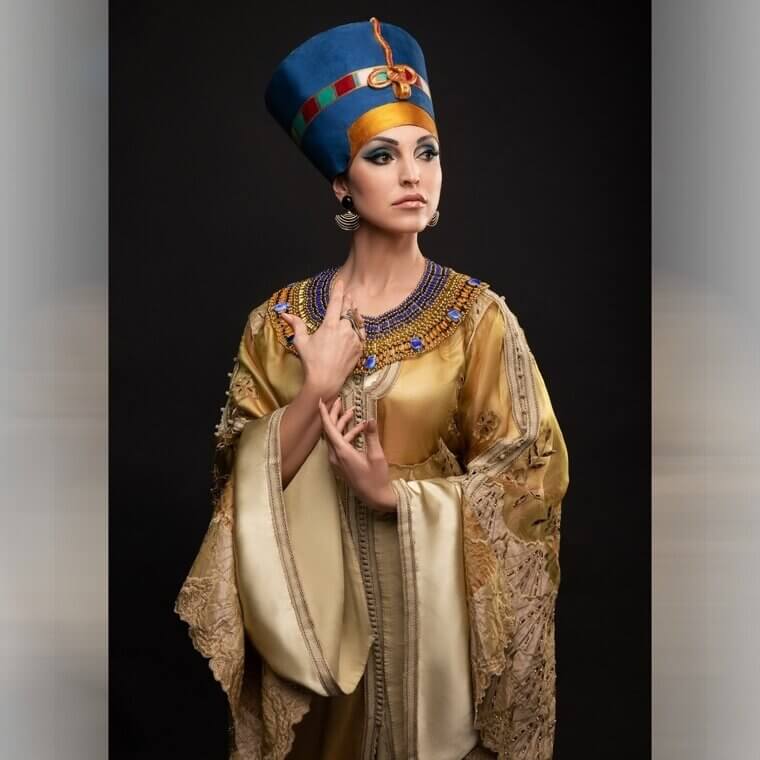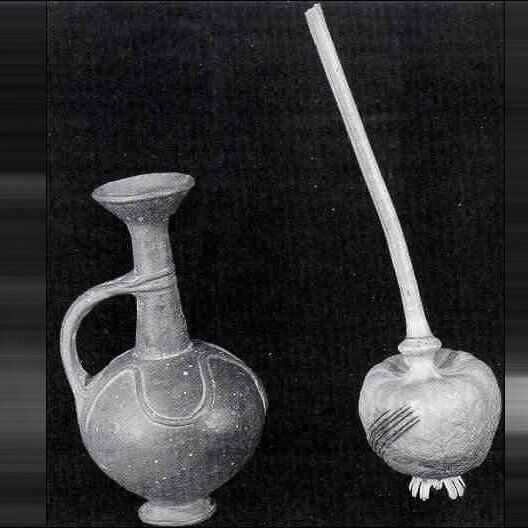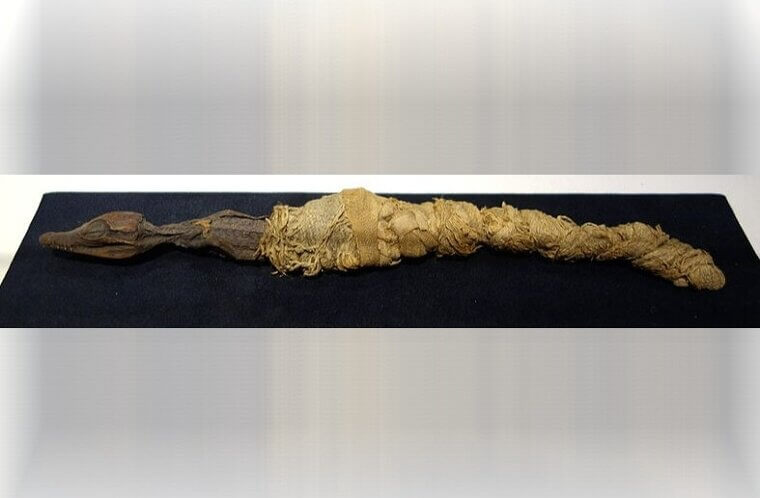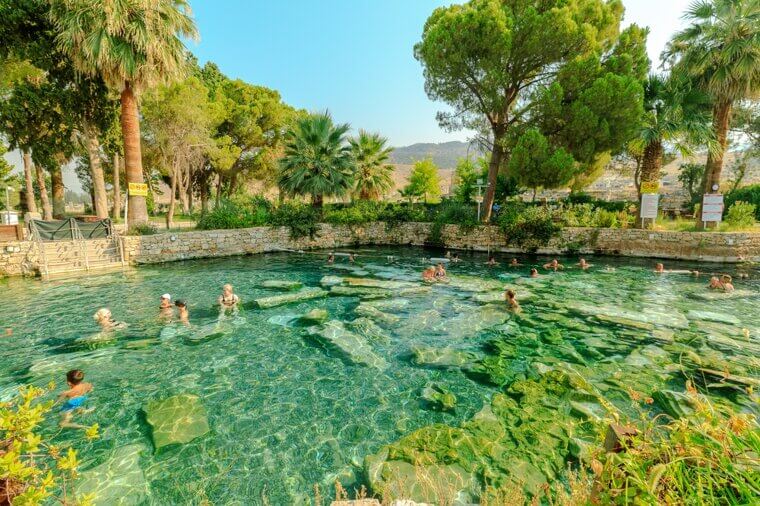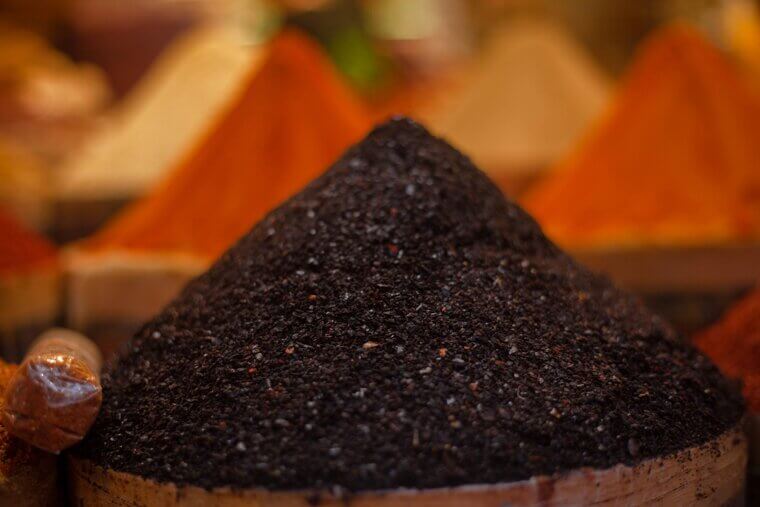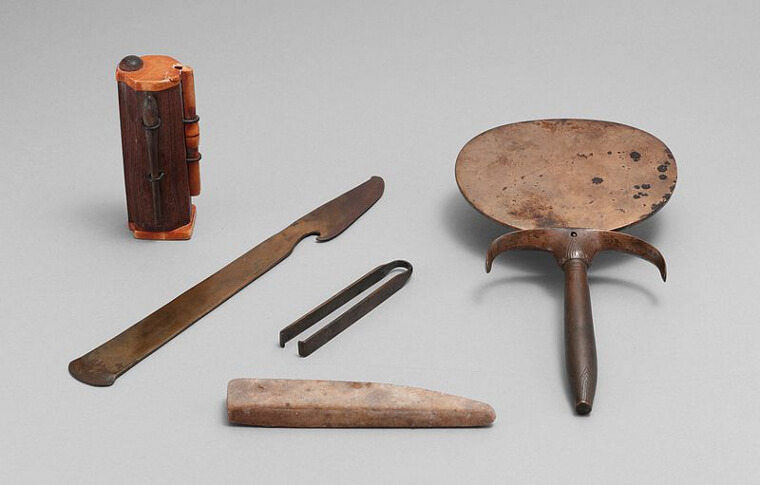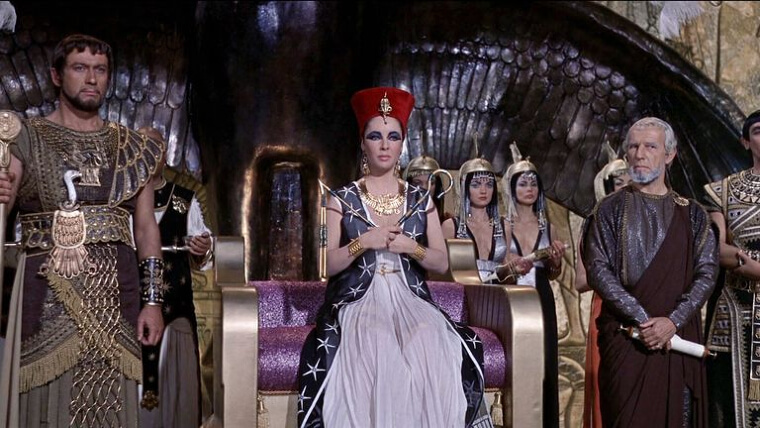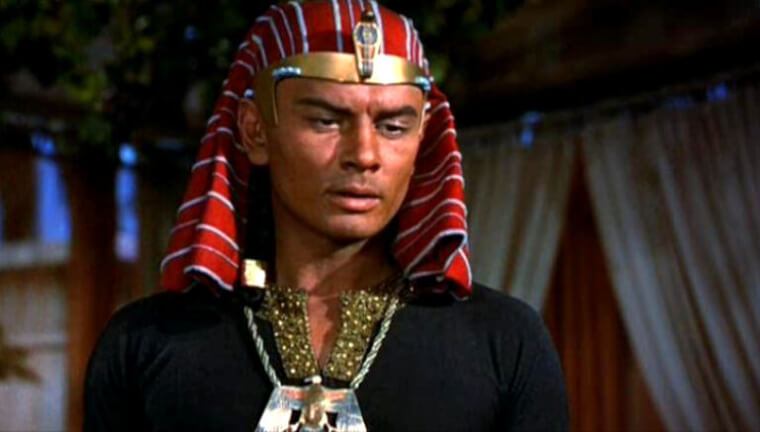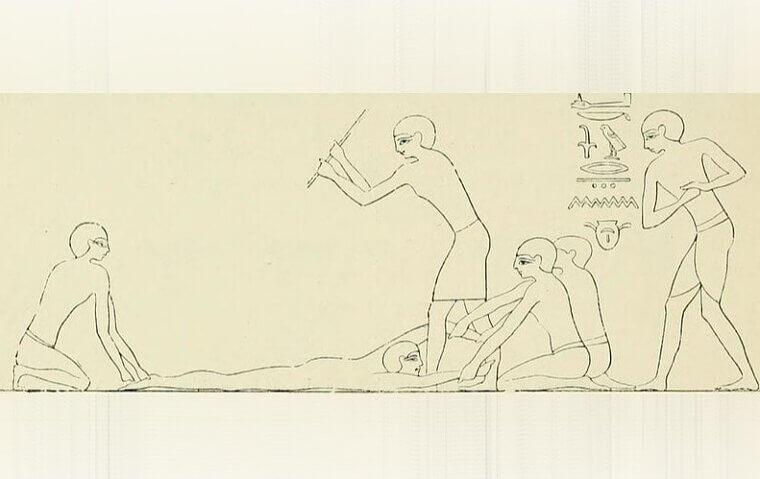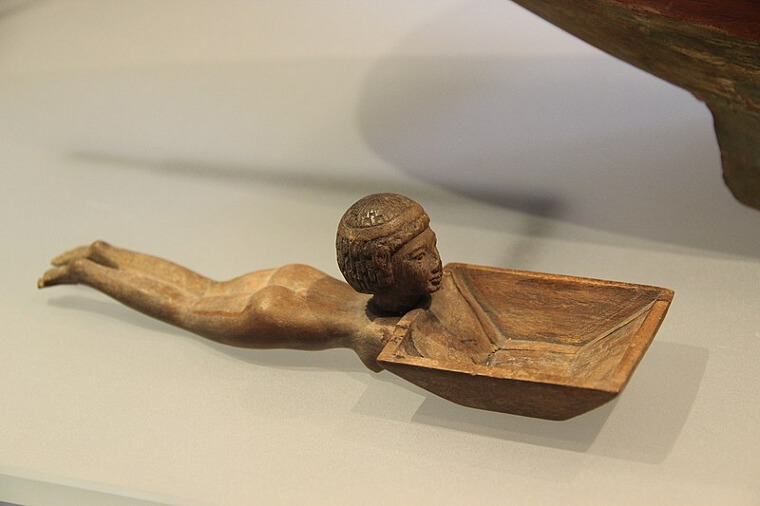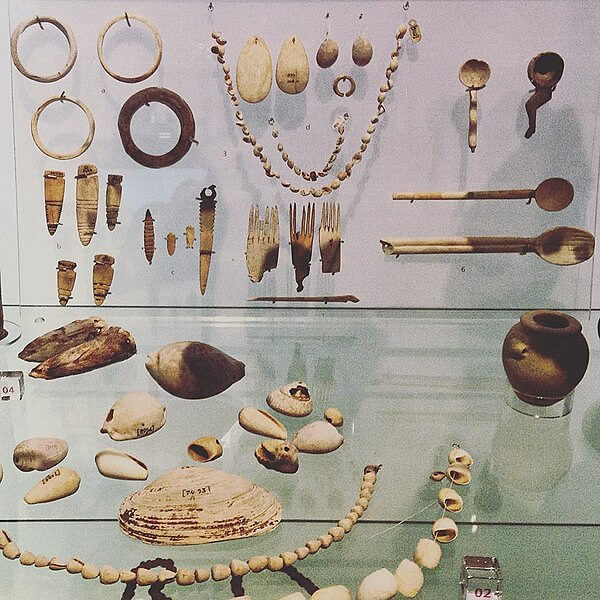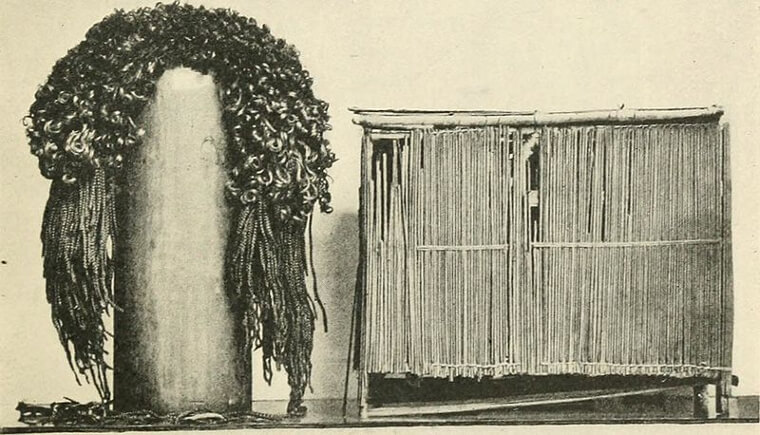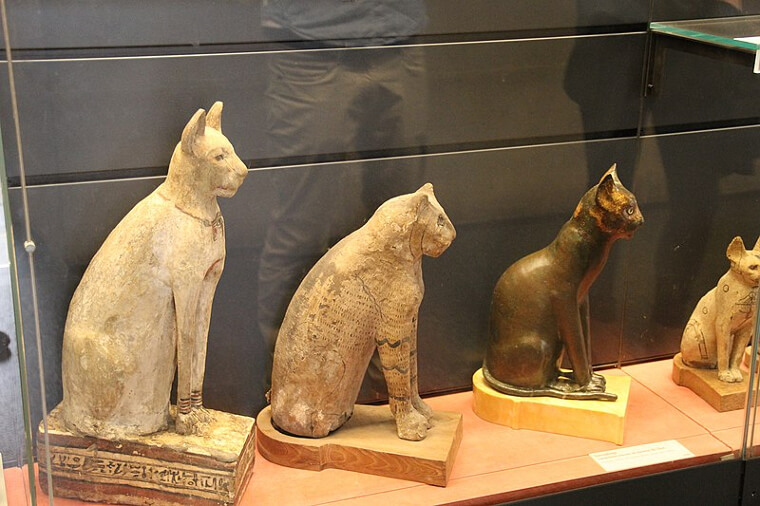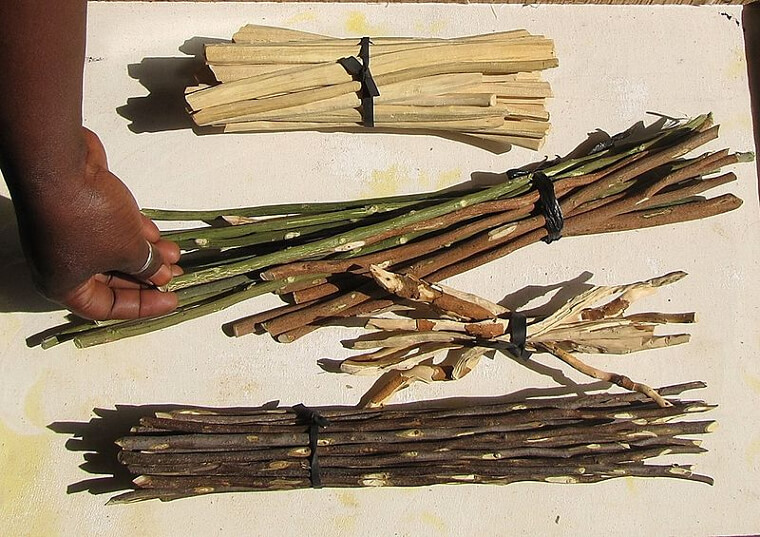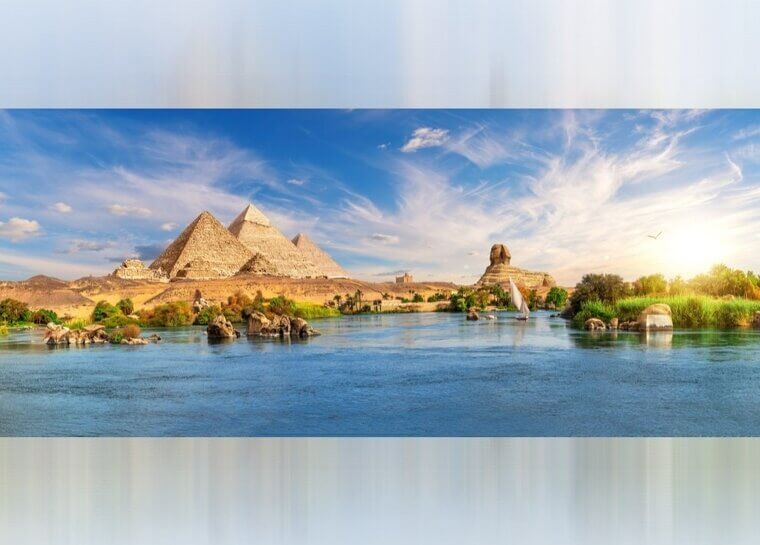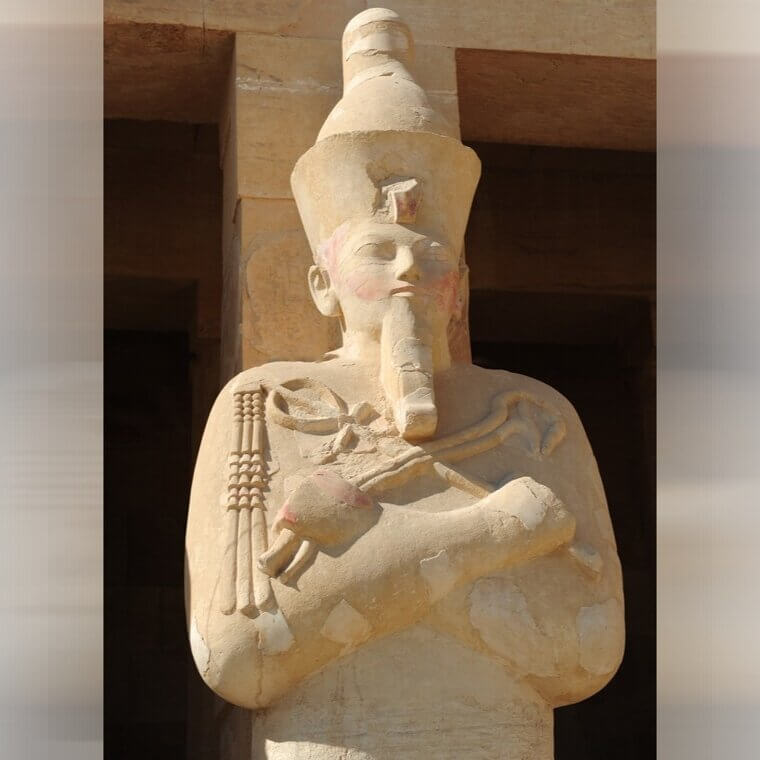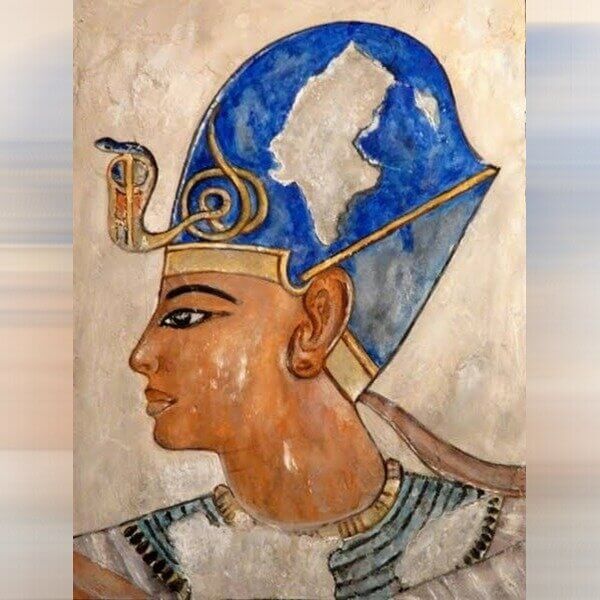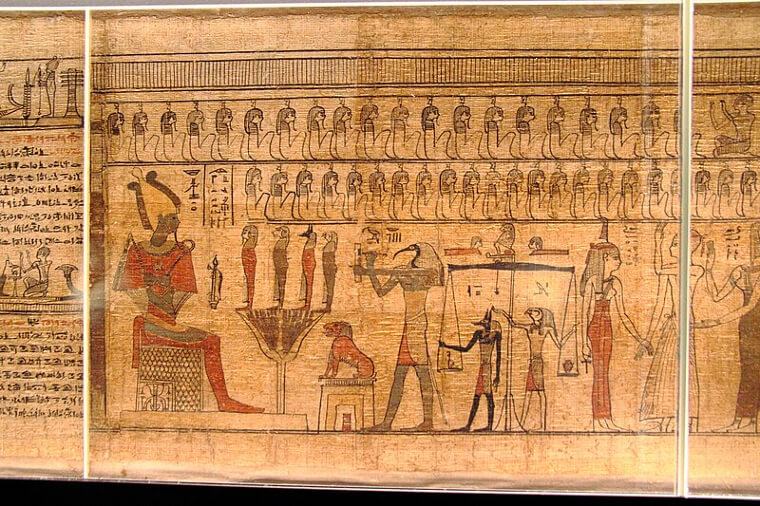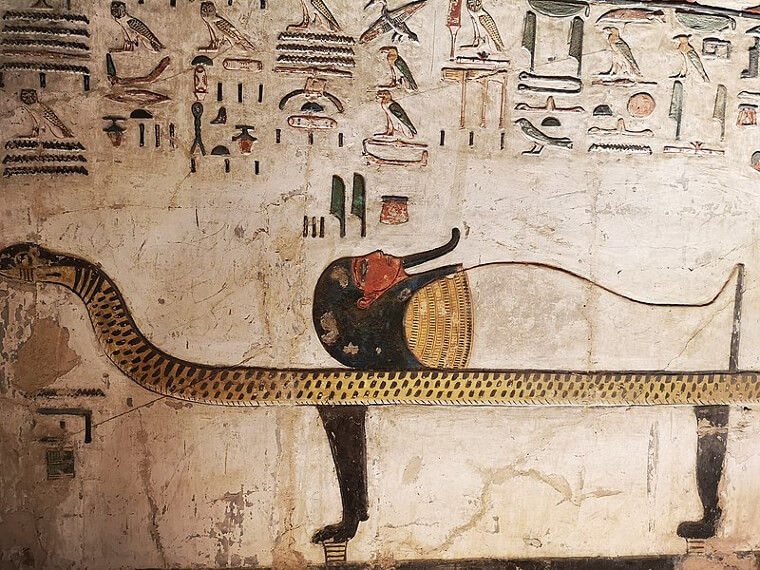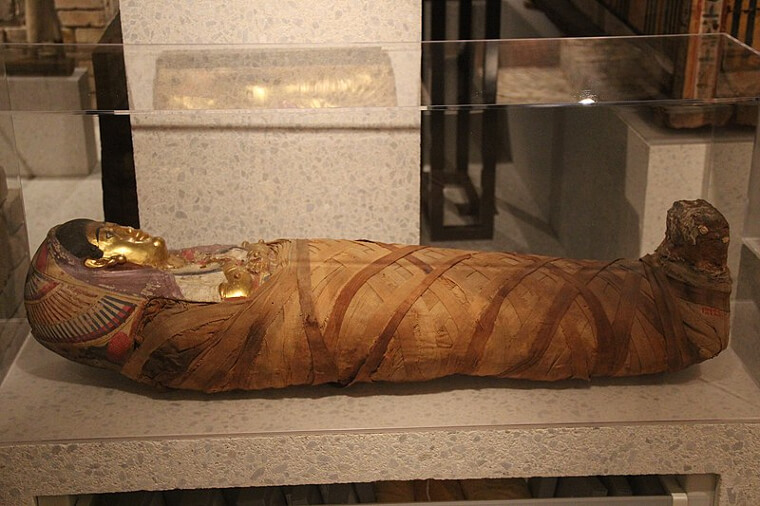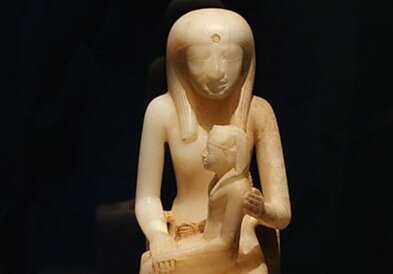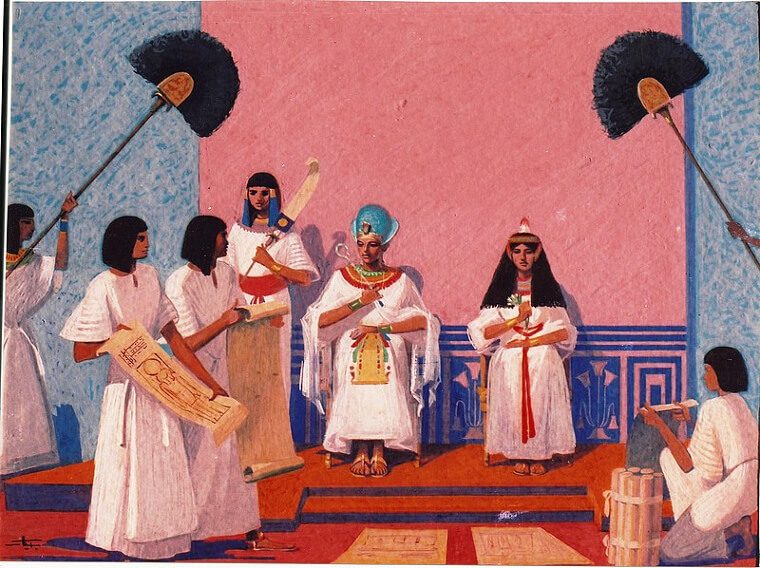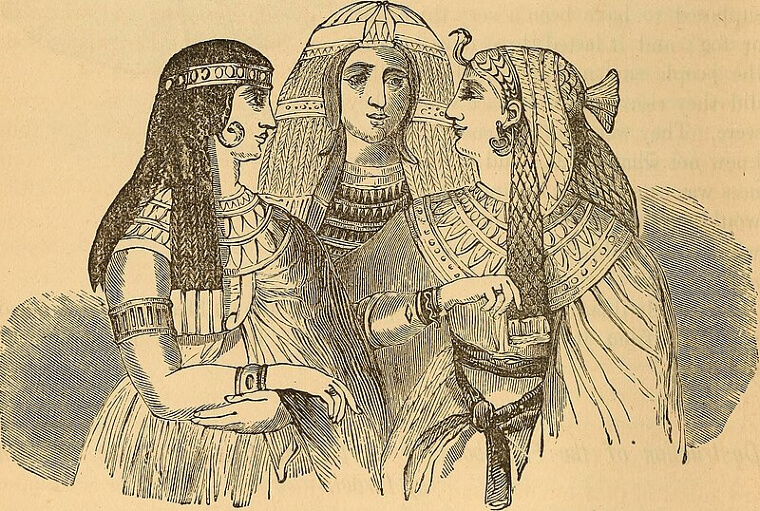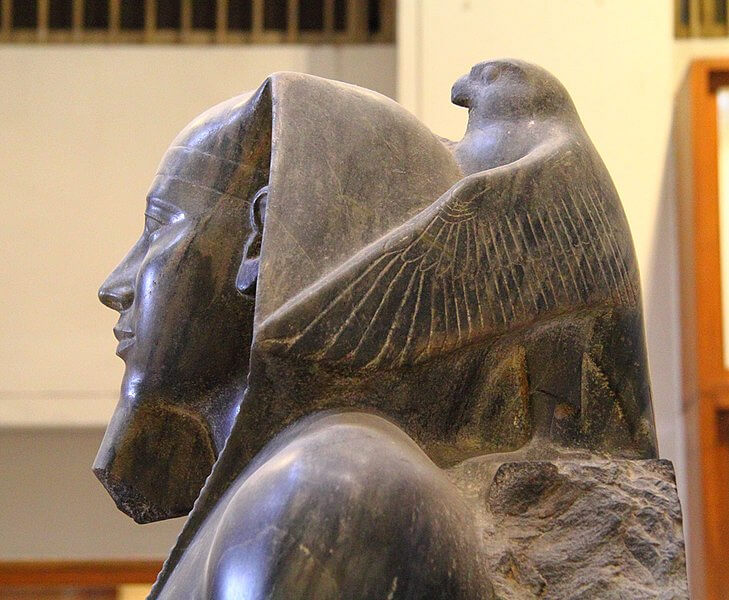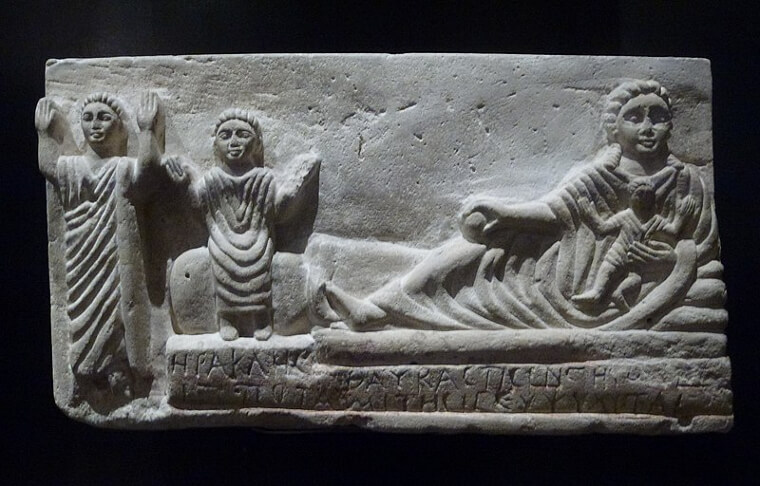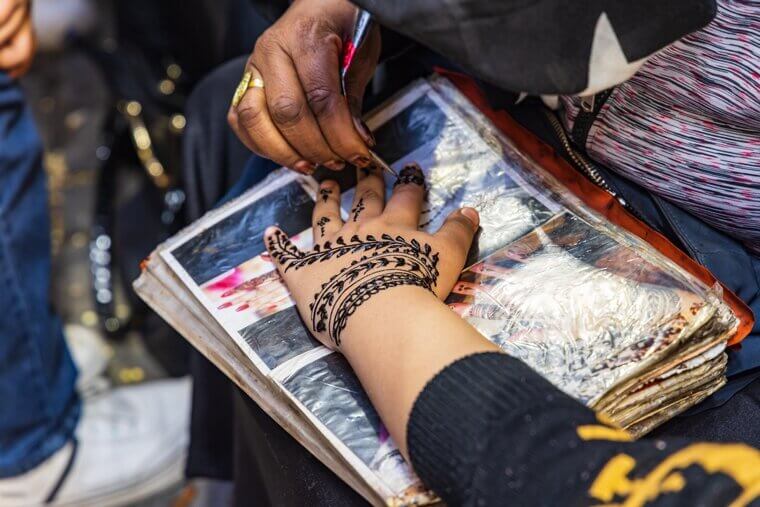Crowning A New Pharoah Was A Year Long Event
Throughout history, it hasn't been uncommon for new kings or emperors to make a huge fuss about ascending to the throne. Many often threw elaborate parades and games, but ancient Egypt might've been on another level. Their coronation celebrations could last up to a year, and they involved a lot of feasts, parades, and other celebrations you might associate with ancient royalty. Most of the time, someone just ascended through traditional inheritance.
However, during some periods of the kingdom, when there were claims by more than one heir, royal family members may have voted on who would become the next pharaoh.
Their Bedrooms Were Built In Towers That Overlooked Their Empire
When you think about the ancient Egyptians, the first thing you probably think of is the Great Pyramids. But some of their other architecture could be just as magnificent. For example, if you were a wealthy Egyptian, then your bedroom may have been built atop at tower attached to your home, giving you great views of the city or countryside below. But, these towers weren't just built to show off wealth.
They actually had practical use. They were meant give their owners some relief from all of the mosquitos and other bugs below, since it's thought less bugs would be found at such heights.
Animal Fat Provided The Perfect Moisturizer
It might sound weird to use animal fat to moisturize your skin until you realize that a lot of products, even today, use some form of animal fat as an ingredient. The ancient Egyptians knew about this little secret thousands of years before the modern world. But that shouldn't come as too much of a surprise, considering how obsessed they were with beauty. Another benefit of animal fat was that it helped them keep cool.
In addition to animal fat, wealthy Egyptians would've bathed in honey or milk or used different kinds of oils in an effort to stay young and beautiful throughout their lives.
It Wasn't Uncommon For Pharaohs To Marry Family
This is true of a lot of royalty back in the day, but you don't often see it depicted or talked about when it comes to ancient Egypt. However, the truth is that marrying members of your own family wasn't uncommon for the ancient pharaohs either, and this often led to some pretty serious health issues. When researchers found the tomb and body of Pharaoh Tutankhamun, they noticed that he probably suffered from some of these types of ailments.
For example, he had a cleft palate and clubfoot, along with a bone disease. However, his cause of death was most likely the result of malaria and a nasty fall.
Eyeliner Was Used For Way More Than Just Beauty
One of the ancient Egyptians' signature looks involved going heavy on dark eyeliner. This has been depicted in everything from movies to books. But it turns out that they didn't just do this in order to look beautiful, although that was definitely a really big part of it. But it also helped protect their eyes from the rays of the sun, which could and still does get pretty bright in Egypt.
The eyeliner, called kohl, was made from a couple of different things, including lead, and it was also thought that it would protect you from evil spirits or the evil eye.
One Modern Procedure Was Especially Popular
The ancient Egyptians had a lot of different cures, rituals, and procedures, but one of the most popular is actually still done today. It turns out that the Egyptians were pretty fond of getting enemas done. If you're not familiar, then we won't go into all the details about what that involves, but back then, it was done less so for health reasons and more so that people could stay skinny.
The ancient Egyptians had very precise definitions of beauty and meeting those definitions was important for most Egyptians, but especially if you were in the higher classes. The wealthy would've been those most likely to get enemas.
Fake Beards Were Common In Ancient Egypt
If you've ever looked at anything depicting ancient pharaohs, then odds are they were depicted sporting a beard. It was deemed a sign of beauty, and people went to great lengths to find the perfect beard. So much so that it was fairly common for men to wear fake beards, at least if you were a pharaoh. Meanwhile, real facial hair wasn't viewed in nearly the same light as fake beards.
Fake beards weren't always made of hair, either. Often, they were made out of metal, and they were decorated pretty elaborately, similar to the way they look on a sarcophagus.
Egyptians Would Flash People From Boats
Apparently, the ancient Egyptians weren't too big into modesty. It wasn't uncommon for men to flash women on the riverbanks when they were riding down the Nile on a boat. They'd do this in the hopes that a woman would be so impressed that they would jump in the water and swim out to the boat. Of course, that probably didn't work as many times as they hoped it would.
There was also a festival that revolved around this, and people would bring their families out to the river to watch men flash others from boats as they passed by.
Makeup Ingredients Included Bugs
It probably sounds a bit weird at first, but ancient Egyptian makeup was usually made of some mixture of crushed-up bugs. Before you judge, a lot of makeup today uses similar ingredients, so in reality, the Egyptians were just way ahead of their time. The bugs could include the shells of beetles or ants or some mixture of a bunch of different bugs depending on the color and pigmentation.
Today, we use something called the cochineal bug, and it takes tens of thousands of these bugs just to be able to make around a pound of makeup.
Fertility Was Tested Through Very Unique Methods
It turns out that the ancient Egyptians had all kinds of different procedures and treatments for many of the same things people deal with today. Their method for testing fertility was especially unique. We won't get into the details, but it involved garlic or onion and the woman whose fertility was being tested. The next day, if the woman's breath smelled like garlic or onion, then that meant that she was able to have children.
We're not sure how accurate the method was, but fertility, in general, was a huge deal in ancient Egypt, and there were a lot of rituals surrounding it.
They Had Their Own Cures For Migraines
The ancient Egyptians, it turns out, had some pretty wild cures for headaches and migraines. One such cure involved drilling a hole into the patient's skull. The thinking was that it would reduce swelling or relieve stress. It didn't. In fact, drilling or cutting a hole into the skull has been found in a lot of ancient skulls from around the world. Another cure involved the head of a crocodile.
Well, a clay head, at least. They'd then stuff the mouth with herbs and tie it around the patient's head. It's thought that it may have actually helped ease the pain through compression.
The Egyptians Had Their Own Way To Perform Pregnancy Tests
While the ancient Egyptians may not have had the same access to healthcare that we have today, they did have their own way of detecting pregnancies. Apparently, to detect pregnancies, a woman would urinate on some barley, and if the barley or some other type of grain. Next, they'd plant the seeds. If they ended up growing, then the woman knew that she was pregnant. It'd usually take around seven days for the seeds to begin sprouting.
Not only that, but they also had a way to tell the gender depending on whether the wheat or oftentimes, barley would sprout, although we're not sure which grain represented which gender.
They Had Their Own Forms Of Birth Control
Since fertility and beauty were such big issues for the ancient Egyptians, it only makes sense that they had their own birth control methods. One such method involved using leaves to prevent unwanted pregnancies. It's actually thought that the Egyptians may have been the first to come up with some type of birth control method, although it's unclear if it actually worked. The leaves were usually combined with crocodile dung.
More recent studies on acacia gum have shown that it can be somewhat effective when used as a birth control method, and this would've been one of the ingredients the Egyptians would've applied to the leaves they used.
The Egyptians Were Plagued By Lice
The ancient Egyptians were swarmed and plagued with an insect, but it's not the one that's often mentioned in stories, at least not so far as we know for sure. Instead, they had a huge problem with lice and no way to get rid of them. The lice were so bad that they'd infest their wigs, which may have been one of the reasons so many decided just to shave everything off.
When their wigs were deemed too infested to keep wearing, they'd just throw them away and get a new one. It wasn't always glamorous living in the ancient world, even if you were royalty.
Most Bathing Was Done In Public
Bathing in public was pretty common in a lot of ancient cultures, so the Egyptians weren't really alone here. However, you usually hear more about the baths built by the ancient Romans or the Greeks than the Egyptians. If you were lucky enough to be royalty or among the Egyptian wealthy, then you usually had your own bath, but this was pretty rare, and most people bathing with others was the norm.
The ancient Egyptians were also among the first to create hot tubs, which were heated with stones that in turn, were heated with fire. When nice and hot, they'd set the stones in the water.
Herbs Were Used To Fight Halitosis
The ancient Egyptians were all about beauty standards, and those standards were hard to meet if you happened to have bad breath. To fight bad breath, it was common for many Egyptians to chew different herbs that left their mouths feeling minty fresh. It also meant that it wasn't uncommon for someone to have some herbs stuck between their teeth. We can't imagine how distracting this must've been during day-to-day life.
Or, maybe it was such a common thing that nobody really even blinked an eye when they noticed someone had something stuck between their teeth. Either way, it's odd to think about.
They'd Sometimes Shave Their Eyebrows Off
Like with their hair and bears, nice eyebrows were deemed very important. Most people would just make sure that they'd keep up with their eyebrows so that they always looked nice, but some would take it a step further. Actual facial hair, in general, wasn't really considered nice, so some would just completely shave their eyebrows off. The practice was especially common if you had a cat that just passed away.
If your cat passed away, you'd sometimes shave off your eyebrows to show everyone else that you were in a state of mourning over your lost friend until the eyebrows grew back.
There Were Actually Two Ancient Egypts
When we think if ancient Egypt, we usually think about one unified kingdom, and the Great Pyramids are usually somewhere in the background, but at various times it existed as two separate entities. There was the upper Nile and the lower Nile. Both were ruled by different Pharaohs, and they were only occasionally unified after their split. The ruler of Upper Egypt was sometimes referred to as Sedge, while the other ruler was called Bee.
Since the Nile flows north to south, the lower Nile was actually located in the north and vice versa. We know it's very confusing to think about today, but it actually makes a lot of sense.
Pharaohs Took More Than A Single Wife
Pharaohs in ancient Egypt would usually have more than one wife, and when we say more than one, we mean way more. But while they usually have a lot of different wives, there was always one "great wife" who was considered above all of the others. There were no rules on how many wives a pharaoh could have, but there did seem to be a rule that there needed to be one great wife.
Some pharaohs are believed to have had over 100 different wives, as with Ramses II, although it would've been a bit rare for a pharaoh to have that many.
Organs Were Altered During Burial
Death and burial were deeply important in ancient Egypt. Just look at the Great Pyramids, which are basically just giant tombs. So, for religious reasons, the organs were usually removed when it was time to mummify someone. The only thing they didn't alter when they were embalming someone important was the heart since they thought that the heart was the center of a person's spirit. Everything else got put into a jar or was altered.
They'd also sometimes replace parts. Some researchers think that some of Tutankhamun’s organs may have been replaced and buried with him, but the origin of the organs used in the replacement remains a mystery.
The Oil Fertility Check
There are a couple of different details on this list that involve fertility, but that's only because it was so important. One method for checking a woman's fertility involved covering them in oil and making them go to bed like that. Apparently, if they looked "fresh" the next day, then they were fertile. It's unclear what the reasoning behind this one is, but you could "become" fertile later, even if you failed the test the first time.
In addition to some of the more unusual fertility rituals on this list, it would be common for some to go to the temple of Rah and pray for fertility if they were having trouble.
Perfume Was Big In Ancient Egypt
Along with all the other things they did to attain beauty, the ancient Egyptians were really big on perfume. But it wasn't purely for beauty. Perfumes were also believed to have some religious significance, which brought them closer to their gods. They'd often make perfume out of things like frankensince or honey and cinnamon. There were all sorts of different types of perfumes, but the exact mixtures were tightly guarded secrets.
The rarest of these perfumes was called kyphi, and it would be used in religious ceremonies. It had a lot of importance attached to it. We also know of legends associated with it, though the recipe has been lost.
Manicures Were Common
Manicures might seem like more of a modern obsession, but it turns out the ancient Egyptians were really keen on keeping their nails looking their best too. They had what we call manicurist today, who'd paint nails and make sure they were looking their best. The ancient Egyptians were among the first to have manicures or nail art done, and even fake nails were worn by some back then.
We know this because researchers have found mummified remains with painted nails and with henna. You had to always look your best in ancient Egypt, even if it was just for the funeral.
Castor Oil Helped Them Stay Thin
Staying thin in ancient Egypt was an entire ordeal. In addition to some of the procedures they had to keep skinny, they'd also often take castor oil, which acted as a sort of bowel cleanser. It was such a big thing that they'd free up a couple of days on their calendar during the month so that they wouldn't have to worry having to go out and take part in social life.
Castor oil has gotten somewhat popular again recently, but health experts warn that you probably shouldn't take it and that it doesn't really do that much anyway.
Cats Were Thought To Be Magical
You probably already know that cats were considered very special in ancient Egypt, but why? It turns out that cats were thought to be magical and that they could provide some protection from evil spirits and other evil things. Black cats were thought to be especially lucky, which is pretty much the opposite of what a lot of people believe today. But in order to benefit from the magical abilities of cats, you were supposed to really take care of them.
Often, when cats died, they'd be mummified just like people, and it's fairly common to find mummified cats in tombs buried alongside their owners or even in tombs all their own.
They Brushed Their Teeth, And Had Their Own Toothpaste
Today, most toothpaste is all made from the same general ingredients, but in the ancient world, you didn't have the same luxury that we have today. Ancient Egyptian toothpaste was usually made from a mixture of ingredients, which included ox hooves, (burnt, of course), eggshells, and other ingredients you're unlikely to find the back of toothpaste tubes today. The toothpaste they used was really rough, as you might imagine.
However, according to today's research, it actually worked pretty well. It worked so well that it's thought that it may have been on par, if not better than what was used up until a century ago.
Bathing In The Nile Was Routine
Bathing in the Nile was pretty common in ancient Egypt, and it was more so the closer you lived to it. People also use water to wash their clothes. While the Nile was probably a lot less polluted back then compared to today, that doesn't mean that it was completely clean. A lot of ancient sewage ended up in the Nile. It was also cleaner after heavy rains when it would flood.
Not to mention, there was a pretty risk of being attacked by a crocodile. Today, the Nile is heavily polluted with everything from sewage and agriculture runoff to heavy metals and radioactive waste.
Beards Represented Closeness With The Gods
The ancient Egyptians were big on beards, at least on fake beards, and the reason for this stems from one of their gods, named Osiris. The god is always depicted as having a beard that looks really similar to some of the fake beards worn by pharaohs. The better your beard looked in ancient Egypt, the closer you were thought to be to Osiris, and thus, the "holier" you were.
Osiris was extremely important in ancient Egyptian culture. He was the god of the underworld, and it was thought that he was the one who would judge you after you passed.
Different Crowns Or Headpieces Symbolized Different Things
You've probably seen an image of an ancient Egyptian pharaoh wearing a headpiece before. These headpieces could be different colors or shapes depending on what they were doing or where they were ruling. For example, there were different types of headpieces for pharaohs who ruled the upper and lower Niles. Those who ruled the Lower Nile usually wore a flatter red headpiece. If a pharaoh ruled both, then they would have a double crown or pschent.
A blue headpiece was usually only worn when the pharaoh was leading an army in the field or taking part in some kind of religious ceremony. While we know what a lot of them looked like, none have survived till today.
All Those Depictions Of Ancient Egyptians On Ruins Are Inaccurate
This probably shouldn't come as too much of a shock, considering how much the ancient Egyptians prioritized beauty, but all of those depictions of people in ancient Egypt that you've probably seen on ruins and in documentaries are definitely inaccurate. The Egyptians would purposely have their images drawn in a way that was flattering to the point of looking nothing like the people who were actually being drawn or depicted.
But in all fairness, we do this today with things like filters when we're taking photos, so we can't give the ancient Egyptians too hard of a time if we're being honest.
The Ancient Egyptian Language Was Complicated
It's not uncommon for movies involving ancient Egyptians or their ruins to also involve an expert who can read hieroglyphics. It's true that because of the Rosetta Stone, we can make out a lot of ancient Egyptian writing, but we still don't understand all of it. That's because while they may just look like symbols or pictures, hieroglyphics are a lot more complex than that. Many of them have both images and sounds attached to them.
It's so complex that the ancient Egyptians even had different forms of writing for daily use, while hieroglyphics were mainly reserved for monuments and tombs belonging to the elite.
Mummies Weren't Always Treated With The Utmost Respect
This one is a bit dark, but it turns out that necrophilia was a big issue in ancient Egypt. After someone is mummified, sometimes someone comes along and mess with the body. It was such a big issue that they developed their own ways of trying to deter people from messing with mummies. They'd leave the bodies out in the sun for a day or two before burying them.
The hope was that everything that comes with leaving a body out in the sun would make people think twice before sneaking into a tomb and disturbing the dead.
Some Pharaohs Were Only Children
Successions can get messy, and that was as true in ancient Egypt as it has been many times since. Sometimes, the Pharoah just happened to pass away before their heir became old enough to rule, but instead of finding another heir, the young ruler, regardless of their age, just assumed the throne. The most famous example of this is probably Tutankhamun, who was only nine years old when he became a pharaoh.
However, there were some who were even younger, like Pepi II, who was only six when he assumed the throne. He's believed to have lived to the age of 70.
Pharaohs Had To Deal With Morning Meetings
The movies usually make it seem like the lives of ancient Pharaohs were just ones filled with luxury, feasts, and celebrations, which, while sort of true, didn't mean that they didn't have a lot of responsibilities too. These responsibilities started not long after they woke up, in the form of morning meetings they'd have with their advisors and others who'd tell them about the newest developments and what needed attending to.
After all, Pharaohs were the rulers of an entire state, one of the most successful states in the world at the time, and it was their job to make sure that it stayed that way.
Pharaohs Had An Entourage
There is one thing that a lot of movies get right when it comes to the ancient Egyptians, and that was the luxury with which pharaohs traveled. They usually had no less than around 50 followers who went with them where they would go. These followers would carry them along in chairs while walking down the road, making sure that the mobile throne never touched the ground unless the pharaoh wanted to step out.
These followers were made up of friends, other royalty who were a part of the family, advisors, and anyone lucky or powerful enough to make it into the group.
Pharaohs Had Many Religious Duties
One of the most important jobs of the pharaoh was to attend and take part in religious events at temples. However, even pharaohs get sick from time to time, and if they couldn't make it, then they'd have a statue stand in for them at the temple. So long as a statue of them was at the temple, religious ceremonies could precede as planned with priests performing the rituals.
In ancient Egypt, pharaohs were considered divine, so they played an important role in both religion and administration, acting as leaders of both. They even had special areas in the temples where they were allowed to go only.
There Were A Lot Of Little Pharaohs Running Around
Another detail on this list discusses all of the wives a pharaoh would usually have, so it's no wonder that some of them would have over 100 children. This was even with ancient contraception. The children typically lived in the palaces alongside one another, and they'd have all of the luxuries that were possible at that time. For example, they'd have caretakers, teachers, and access to ancient Egyptian healthcare.
To be fair, not every pharaoh had over 100 children, but they did generally have a lot of them. This also made it a bit messy when it came time for succession.
Henna Was Very Popular In Ancient Egypt
Depending on the source you look up, henna may have originated somewhere around ancient Egypt. Others say it came from India. Either way, it was important in ancient Egypt, and women would often wear it when they were getting married. Henna is still done for weddings in many parts of the Middle East today. Embalmers would also use henna to stain mummies since it helps preserve the body and wrappings.
Henna was important in both religious and cultural life in ancient Egypt, and it doesn't take much searching to find images from today that may have been similar to ancient henna designs.
Pyramids And Tombs Were Deeply Important
We probably don't have to tell you this, but while they might just look like pretty structures today, the ancient Egyptians looked at the pyramids entirely differently. They were giant tombs meant to help a pharaoh pass from one life to the next. Each giant structure, which has lasted for thousands of years, was meant for a single person. The only other thing we can think of in comparison is the Taj Mahal.
These were and still are really mysterious places, with a secret room or passage seemingly discovered every decade and rumors of curses being unleashed whenever an important mummy is unearthed.
Pharaohs Traveled In Style
In addition to around 50 followers who would tail the pharaohs wherever they went, they also had servants and were carried around in ornately decorated thrones. These servants would carry them atop their shoulders in giant platforms, making sure to move in unison so that the ride wouldn't be too bumpy. They'd also fan the pharaoh with huge leaves if it got too hot, which it often did in ancient Egypt.
Pharaohs also had their own form of ancient yachts. They'd often sail their boats along the Nile if they felt like getting out on the water and enjoying a day of pampering.
